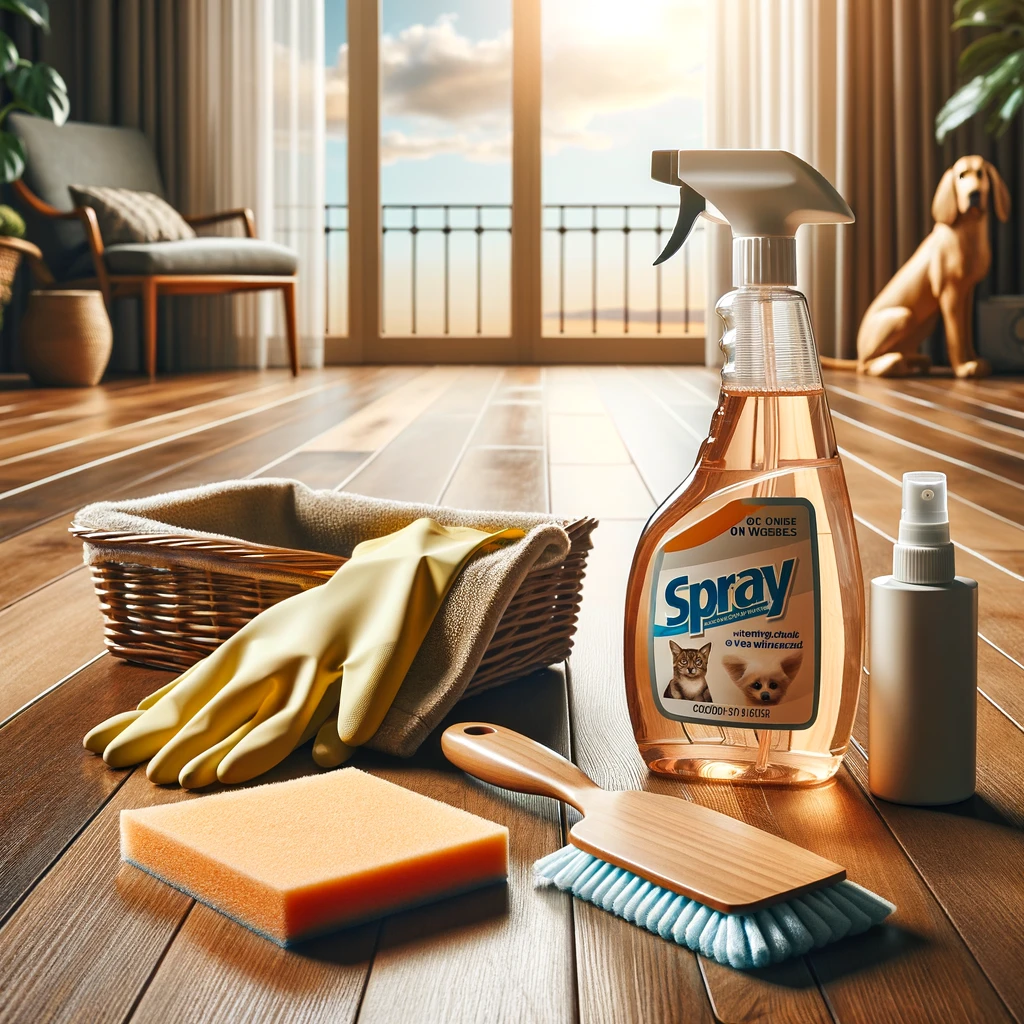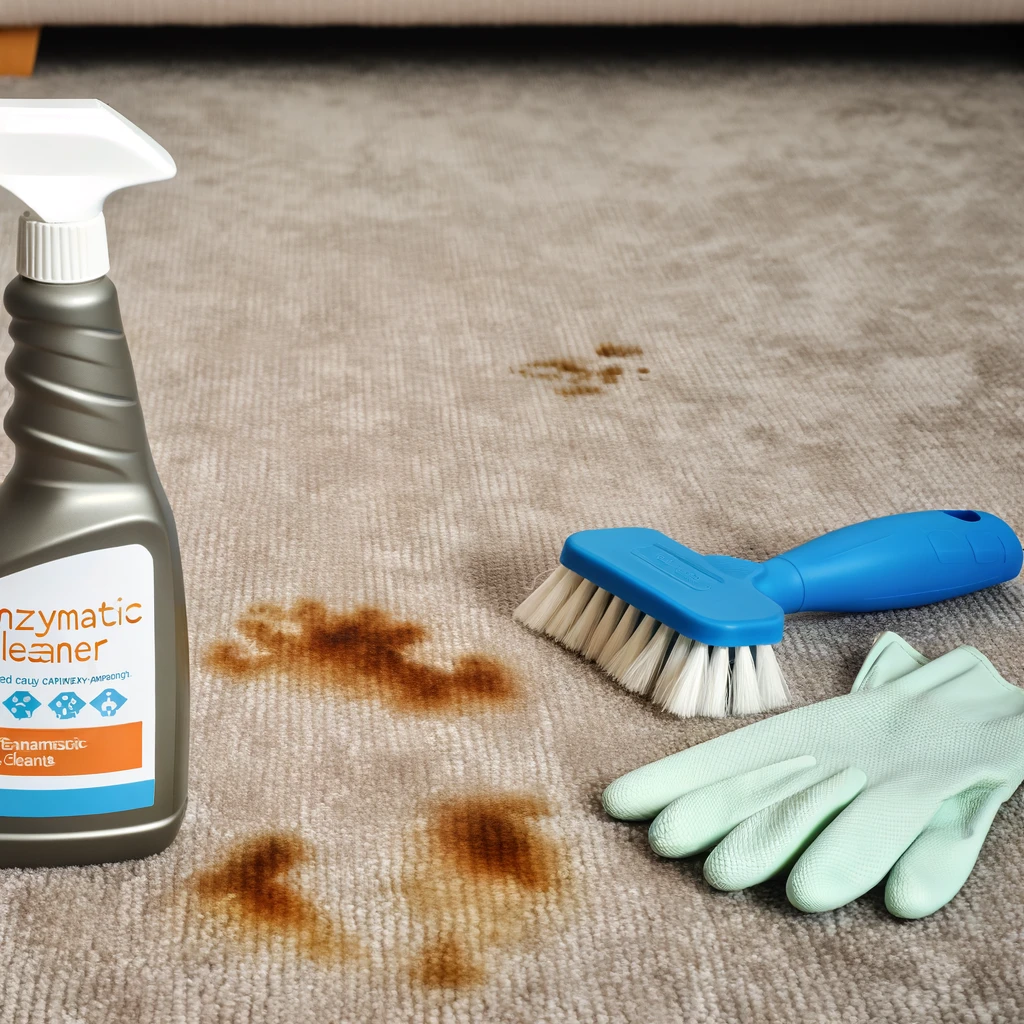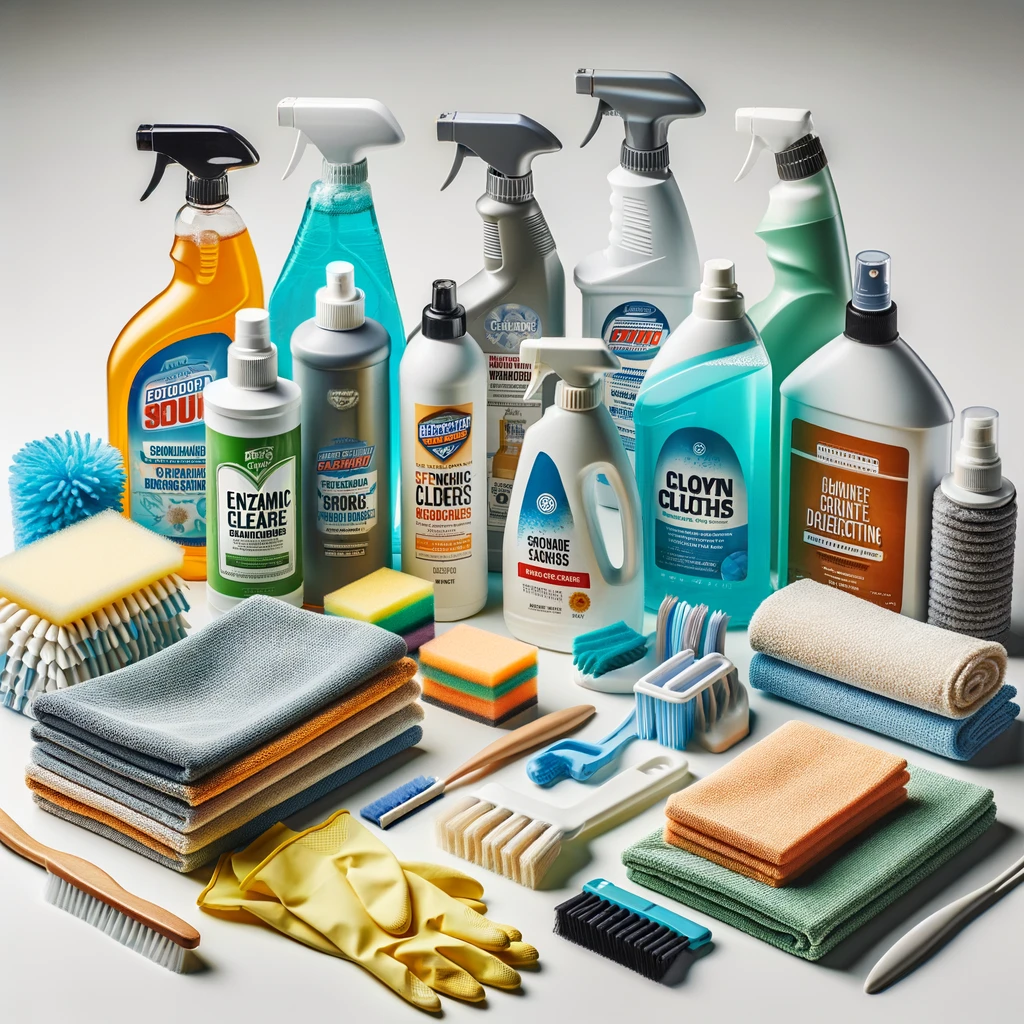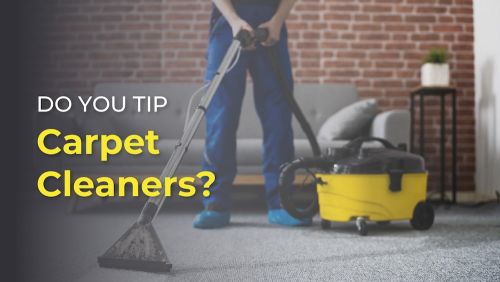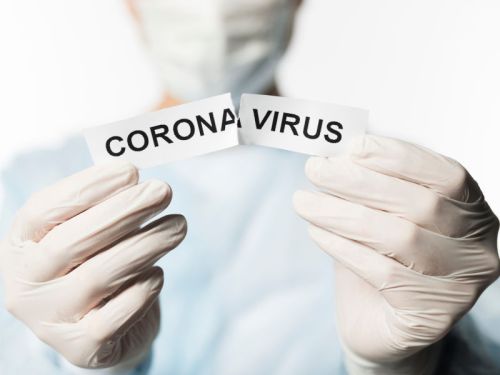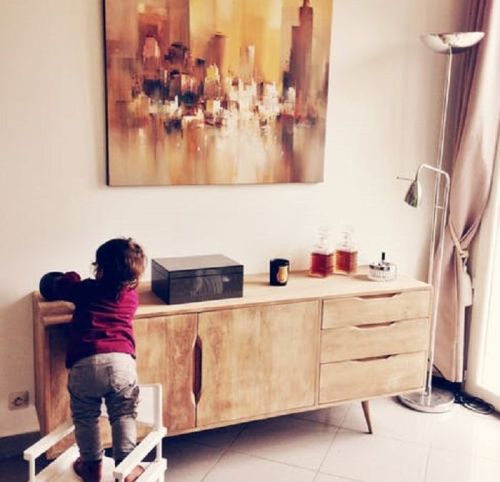Mastering Feces and Droppings Mess Cleanup: A Comprehensive Guide to Safely Cleaning Carpets and Wooden Floors
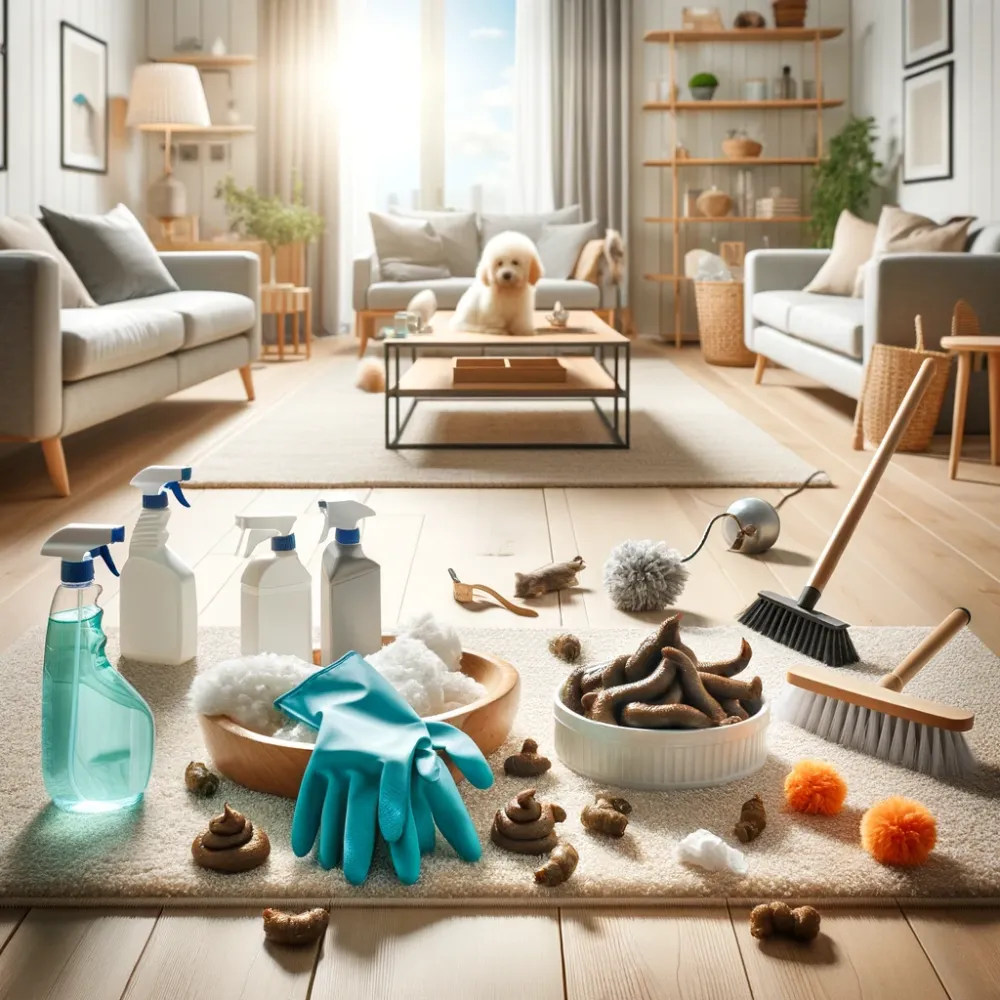
When faced with cleaning feces or animal droppings from carpets and wooden surfaces, quick action is key, alongside employing the right cleaning techniques for comprehensive sanitization. A systematic guide enhances effectiveness, detailing preparatory steps such as protective gear usage, solid waste removal, and the selection of suitable cleaning agents tailored for either surface type. This process underscores the importance of not only addressing the visible mess but also ensuring the elimination of bacteria and odors for a deeper clean. The guide's emphasis on step-by-step execution guarantees that even the most daunting of cleanups can be handled efficiently, restoring the cleanliness and safety of your living spaces.
Cleaning Feces and Animal Droppings from Carpets
Step 1: Protect Yourself
Before starting the cleaning process, wear gloves to protect your hands from contaminants. If you're sensitive to smells or dust, consider wearing a mask.
Step 2: Remove the Solids
Carefully pick up any solid waste using a paper towel or a disposable plastic bag. Try to lift the solids away from the carpet without pushing them further into the fibers.
Step 3: Clean the Area
Mix a solution of mild dish soap and warm water. Soak a clean cloth in the solution, wring it out slightly, and dab the stained area gently. Avoid scrubbing harshly, as this can work the stain deeper into the carpet fibers.
Step 4: Apply an Enzymatic Cleaner
Enzymatic cleaners are specifically designed to break down organic matter such as feces and eliminate odors. Apply the cleaner according to the product's instructions, usually by spraying it directly on the stain. Allow it to sit for the recommended amount of time before blotting it dry with a clean cloth.
Step 5: Rinse and Dry
After the enzymatic cleaner has done its work, rinse the area with clean water by blotting with a damp cloth. Then, blot with a dry cloth to remove as much moisture as possible. Allow the area to air dry completely, or use a fan to speed up the process.
Cleaning Feces and Animal Droppings from Wooden Surfaces
Step 1: Remove the Solids
Just like with carpets, start by removing any solid matter using a paper towel or a disposable bag. Be gentle to avoid scratching the wood surface.
Step 2: Clean the Area
Create a cleaning solution by mixing mild dish soap with water. Dampen a cloth with the solution and gently wipe the affected area. For tougher stains, you might consider a solution of vinegar and water (1 part vinegar to 4 parts water), but be cautious, as vinegar can damage some finishes.
Step 3: Disinfect
After cleaning, it’s important to disinfect the area to kill any remaining bacteria. You can use a commercial disinfectant suitable for wood surfaces or a mild bleach solution (1 part bleach to 10 parts water). Apply the disinfectant with a cloth, making sure not to oversaturate the wood, and then wipe dry.
Step 4: Rinse and Dry
Wipe the area with a damp cloth to remove any residue from the cleaning and disinfecting solutions, then dry thoroughly with a clean, dry cloth. Ensure the wood is completely dry to prevent warping or damage.
Tips for Prevention and Maintenance
Act Quickly: The sooner you clean up the mess, the easier it will be to remove stains and odors.
Test Cleaning Solutions: Always test any cleaner on a small, inconspicuous area first to ensure it doesn’t damage the carpet or wood finish.
Ventilation: Open windows or use fans to ventilate the area well during and after cleaning.
Regular Cleaning: Keep your floors clean through regular vacuuming or sweeping to prevent any buildup of dirt that can make cleaning more difficult.
Following the outlined steps meticulously for cleaning feces and animal droppings from both carpets and wooden surfaces goes a long way in ensuring your home not only remains visibly clean but also maintains a hygienic environment that is free from harmful pathogens and unpleasant odors. This detailed cleaning process involves initial removal, thorough cleaning, and the application of enzymatic cleaners or appropriate disinfectants that target the underlying odors and stains, effectively breaking them down. Regular maintenance and prompt attention to accidents prevent the buildup of bacteria and odors, contributing to a healthier living space.
When dealing with liquid feces or animal droppings, both carpets and wooden surfaces require a more nuanced approach to cleaning to ensure complete removal and disinfection. This adjusted method involves initially absorbing as much of the liquid as possible using absorbent materials, followed by applying specialized cleaning solutions formulated to handle the consistency and potential pathogens in liquid waste. For carpets, this may include using enzyme-based cleaners that break down organic matter without damaging the fibers, while wooden surfaces might require gentle, non-abrasive cleaners to prevent warping or staining. Additionally, thorough drying and ventilation are crucial steps to prevent moisture damage and eliminate any lingering odors, ensuring the affected area returns to a safe, hygienic state.
Cleaning Liquid Feces and Animal Droppings from Carpets
Adjusted Step 2: Absorb the Liquid
Instead of picking up solids, you'll need to absorb as much of the liquid as possible. Lay down a generous amount of paper towels over the affected area, and gently press down to absorb the liquid. Replace the paper towels as they become saturated. Avoid rubbing or scrubbing, as this can spread the stain and push the feces deeper into the carpet fibers.
Follow Through with Enzymatic Cleaner
After absorbing as much liquid as possible, proceed with applying an enzymatic cleaner as previously described. Enzymatic cleaners are particularly effective against liquid feces because they can penetrate deeper into the carpet fibers to break down organic matter and eliminate odors.
Cleaning Liquid Feces and Animal Droppings from Wooden Surfaces
Adjusted Step 2: Clean the Area Gently
For liquid waste on wooden surfaces, it’s important to clean the area gently but quickly to prevent the liquid from seeping into the wood. Use a damp cloth to gently wipe away the feces. If the droppings are runny, you might need to use a slightly more absorbent material, like a sponge, to soak up the liquid. However, ensure the sponge is only damp and not wet to avoid damaging the wood.
Additional Tip for Both Surfaces: Baking Soda
After cleaning and disinfecting both carpets and wooden surfaces but before they dry completely, consider applying baking soda to the area. Baking soda is highly absorbent and can help draw out any remaining moisture and odors from the surfaces. Sprinkle a generous amount of baking soda over the damp area, let it sit for several hours or overnight, and then vacuum or sweep it away. This step can be especially helpful for liquid feces, as it aids in ensuring the area is dry and odor-free.
General Tips for Handling Liquid Feces
Quick Action: With liquid feces, it’s even more critical to act quickly to prevent the waste from spreading or seeping deeper into carpets and wood.
Hygiene and Safety: Ensure you’re wearing gloves and, if necessary, a mask, to avoid direct contact with the waste and reduce the risk of inhaling any harmful bacteria.
Professional Cleaning: If the affected area is large or if you’re unable to remove the stain and odor completely, consider hiring professional cleaners who have the tools and solutions to deal with such situations effectively.
Adapting your cleaning approach to effectively manage liquid feces involves a comprehensive strategy that not only focuses on the immediate cleanup but also on preventing future incidents and ensuring long-term cleanliness and hygiene. This means incorporating a variety of tools and solutions specifically designed for the task, such as enzymatic cleaners that break down organic matter and neutralize odors at the molecular level, ensuring that even the most stubborn smells and stains are thoroughly removed. Additionally, understanding the importance of protective gear, like gloves and masks, can safeguard against potential health hazards, making the cleanup process safer for you and your family.
Recommended Detergents: A Curated List of Effective Solutions
For effectively cleaning feces and animal droppings, especially from household surfaces, several cleaning solutions and detergents are recommended. These products are formulated to tackle the mess and eliminate odors, ensuring your home remains clean and hygienic.
Hepper Advanced Bio-Enzyme Pet Stain & Odor Eliminator Spray: An enzymatic cleaner that penetrates deep to remove stubborn smells and stains. It's available on Amazon (🔗).
Nature’s Miracle: An enzyme-based cleaning product, well-regarded for its effectiveness in removing pet stains and odors from carpets and upholstery (🔗).
Dawn Dish Soap: Combined with white vinegar and water, this makes an effective homemade solution for cleaning feces from carpets (🔗).
Yellow All-Purpose Cleaning Vinegar and Water Solution: A mix of white vinegar and water can be used to clean hard surfaces and is also effective for treating stains and odors on carpets (🔗).
Bleach Solution: A bleach mixture (one part bleach to nine parts water) is suggested for heavy-duty cleaning and disinfecting of surfaces affected by rodent urine and feces (🔗).
Commercial Disinfectants or Steam Cleaners: For carpets and upholstery, using a commercial disinfectant or a commercial-grade steam cleaner is recommended for thorough cleaning and disinfection (🔗).
Hand Sanitizer: After cleaning, using hand sanitizer is a good practice to ensure any residual germs on your hands are killed (🔗).
Disposable Gloves: While not a cleaning solution, wearing gloves is crucial for hygiene and protection when cleaning up waste (🔗).
Disinfectant Wipes: For quick cleanup on hard surfaces, disinfectant wipes can be effective and convenient (🔗).
Bio-Enzyme Detergents like Simple Solution for Hard Top Flooring: Specifically mentioned for its effectiveness on hard surfaces, an enzyme digester can break down and remove organic matter and odors (🔗).
